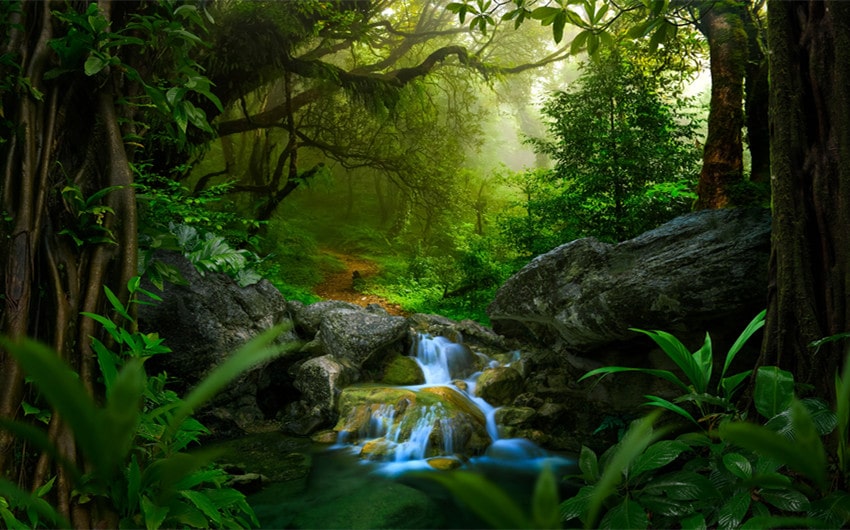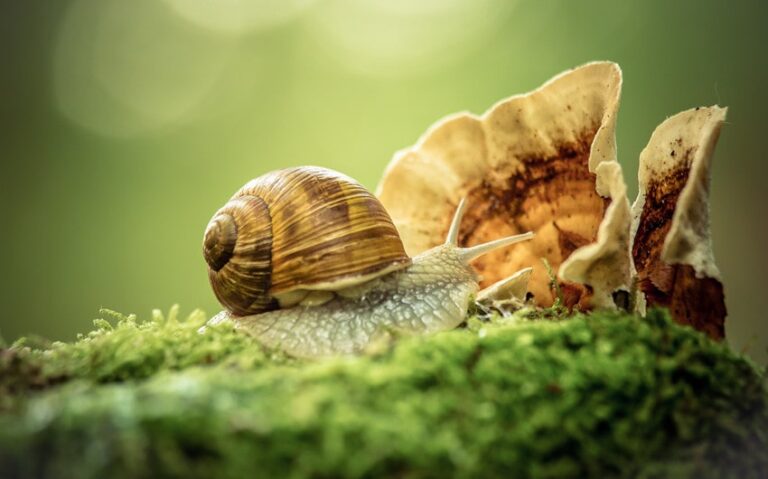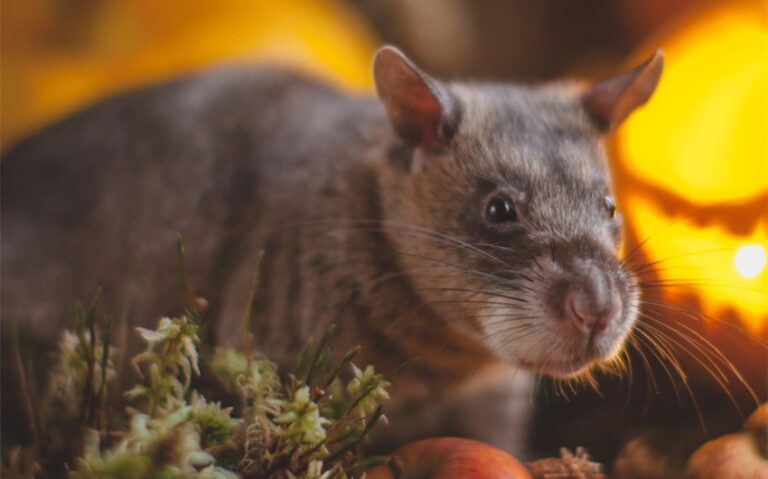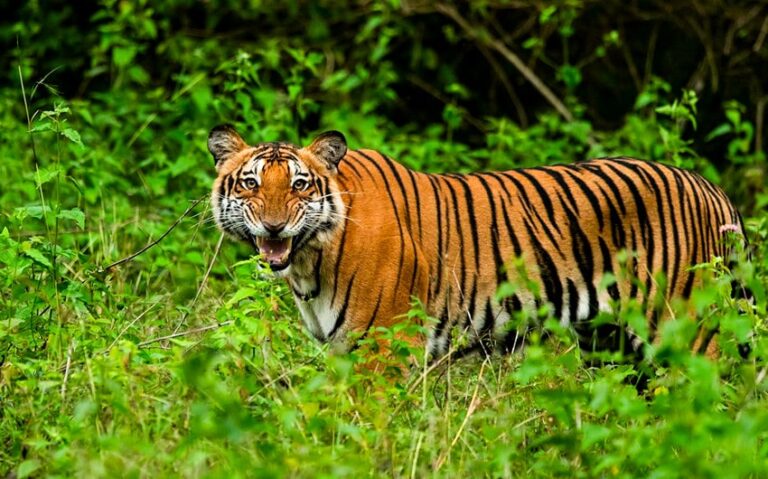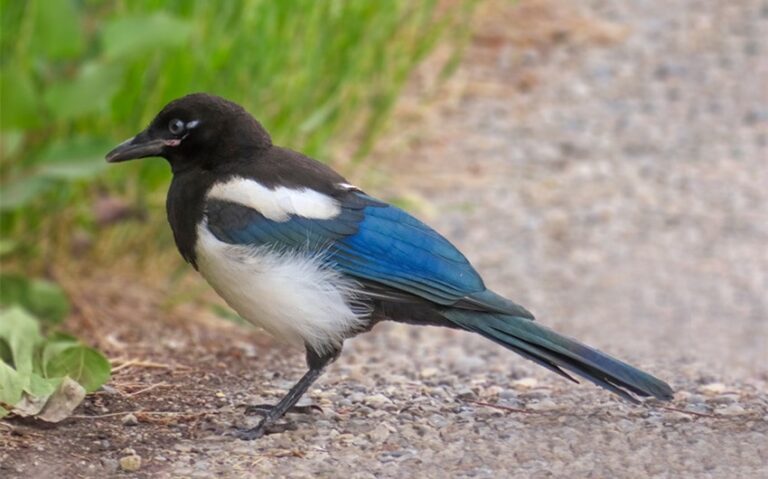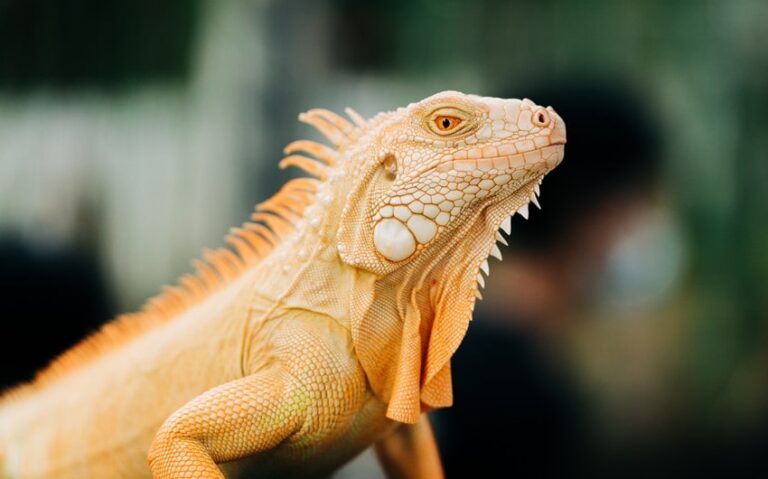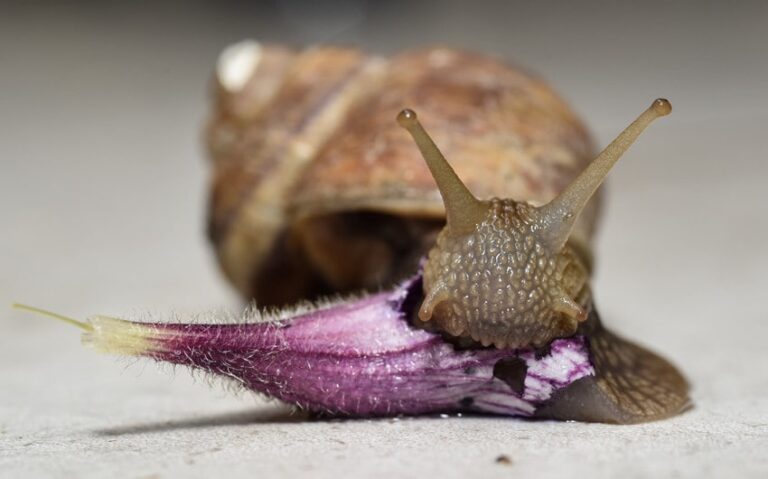Rainforest Food Web: From Plants to Predators in the Ecosystem
The rainforest is one of the most vibrant ecosystems on Earth, teeming with life and filled with complex interactions between plants, animals, and insects. Every species plays a crucial role in keeping this natural world in balance. From the smallest insects to the mighty predators, each one depends on the other for survival.
Understanding how they all connect gives us a deeper appreciation for nature’s harmony. By exploring the rainforest food web, we get a clearer picture of how everything is linked and why even the tiniest creatures are vital to keeping this ecosystem thriving.
The Layers of the Rainforest: A Vertical Ecosystem
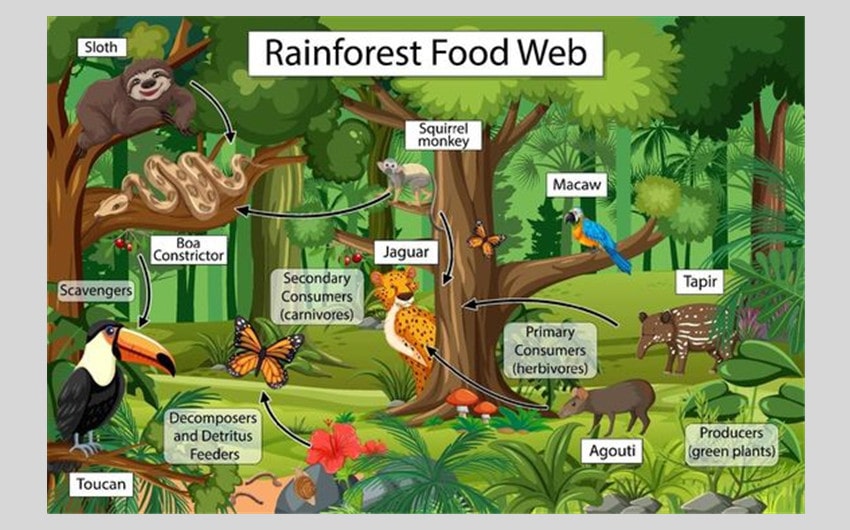
Image source: Pinterest
The rainforest is often described as a vertical ecosystem, with each layer hosting its own unique set of species and interactions. These layers create a complex web of life, where animals, plants, and insects have adapted to survive in specific conditions. Let’s explore the four main layers of the rainforest and understand the roles they play in maintaining the overall balance of the ecosystem.
1. Emergent Layer: The Giants of the Rainforest
The emergent layer is the highest point of the rainforest, with towering trees reaching heights of up to 200 feet. These trees break through the canopy and are exposed to direct sunlight, wind, and rain. Birds of prey, such as harpy eagles, and flying mammals like bats often call this layer home, using it to hunt for smaller animals.
Insects and certain types of plants that thrive in intense sunlight also inhabit this layer. The trees in the emergent layer provide essential resources like seeds and fruit that eventually fall to the lower layers, feeding herbivores and decomposers below.
2. Canopy Layer: The Heart of the Rainforest
The canopy is the most active and biodiverse layer, forming a thick, leafy roof over the rainforest. This layer, typically 60-100 feet above the forest floor, is where most of the rainforest’s wildlife can be found, including monkeys, sloths, birds, and countless insects.
The canopy is packed with fruit-bearing trees, flowers, and vines, making it a hotspot for herbivores, as well as the animals that prey on them. The dense foliage also provides shelter, helping species hide from predators. The canopy is crucial for the rainforest’s energy flow, as the plant life here absorbs large amounts of sunlight, which fuels the food web below.
3. Understory Layer: A Hidden World Beneath the Canopy
Beneath the canopy lies the understory, a dimly lit layer with much less sunlight and higher humidity. Here, smaller plants such as ferns, shrubs, and young trees thrive. This layer is often home to reptiles, amphibians like frogs, and insects that have adapted to the cooler, darker conditions.
Large predators like jaguars and leopards occasionally pass through the understory, using it as a hunting ground for prey such as small mammals and birds. The understory is also a place for insects and smaller creatures to find shelter, with the thick foliage offering cover from larger predators.
4. Forest Floor: The Foundation of the Rainforest
The forest floor is the darkest layer, receiving less than 2% of the sunlight. This dense, damp environment is where decomposers such as fungi, bacteria, and earthworms thrive, breaking down fallen leaves, fruits, and dead animals. This recycling process is essential for nutrient cycling, as it returns vital minerals and nutrients back into the soil, supporting plant life across all layers.
The forest floor is also home to scavengers like ants and beetles, as well as larger animals such as tapirs and peccaries. These animals feed on fallen fruit, seeds, and smaller creatures, contributing to the food web in their own way.
Primary Consumers: Herbivores of the Rainforest
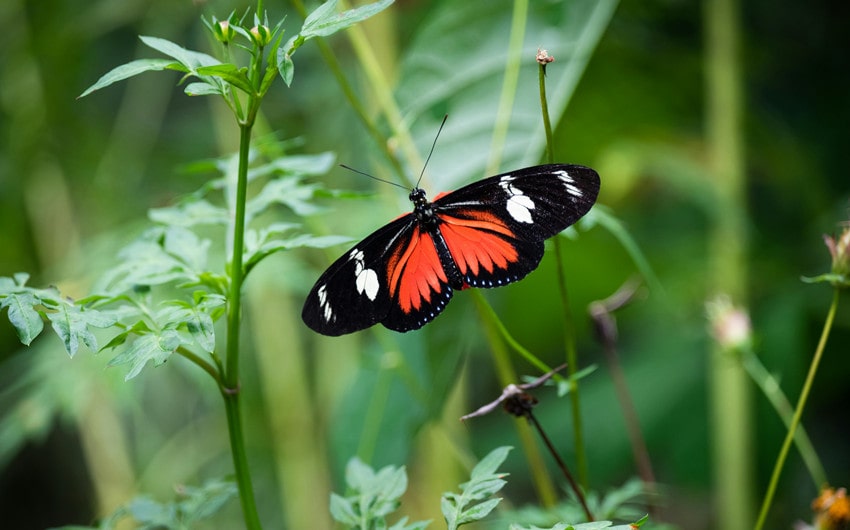
In the rainforest food web, primary consumers play a crucial role by feeding on plants, fruits, and other vegetation. These herbivores are the first link between the plant producers and the higher levels of the food web, transferring energy from plants to the carnivores and omnivores that rely on them.
The diversity of primary consumers in the rainforest is staggering, as they come in all shapes and sizes, ranging from insects to large mammals. Let’s take a closer look at the herbivores of the rainforest and their importance to the ecosystem.
1. Insects: The Tiny Yet Powerful Consumers
Insects are some of the most abundant primary consumers in the rainforest. These tiny creatures feed on leaves, nectar, and even the sap of trees. For example, leafcutter ants are known for their impressive teamwork in harvesting leaves, which they carry back to their colonies to cultivate fungus for food.
Butterflies and bees feed on the nectar of flowering plants, not only nourishing themselves but also pollinating plants as they move from flower to flower. Though small, these insects are vital to the rainforest’s food web, as they not only serve as primary consumers but also become prey for a wide range of predators, contributing to the energy transfer within the ecosystem.
2. Birds: Feathered Foragers
Birds are another group of primary consumers in the rainforest, with many species relying heavily on fruits, seeds, and nectar. For instance, parrots and toucans use their strong beaks to crack open nuts and seeds, spreading plant seeds as they forage.
Hummingbirds, on the other hand, feed on nectar, flitting from flower to flower, pollinating plants in the process. These birds not only play an important role in plant reproduction but also serve as a food source for larger predators like snakes and raptors, making them a key part of the food web.
3. Small Mammals: Forest Grazers
A variety of small mammals also act as primary consumers, feeding on fruits, leaves, and even flowers. Sloths, for example, are slow-moving herbivores that spend most of their lives hanging from trees, feeding on leaves. Their low-energy diet requires them to conserve energy by moving slowly, and they are an essential part of the ecosystem, as their movement through the trees helps to break off old leaves and make space for new growth.
Capybaras, the world’s largest rodents, are found near water sources in the rainforest and graze on grasses and aquatic plants. By feeding on the vegetation, they help control plant growth, preventing overgrowth and contributing to the balance of the ecosystem.
4. Reptiles and Amphibians: Plant-Eating Survivors
While many reptiles and amphibians in the rainforest are carnivores or omnivores, some species primarily feed on plant matter. Iguanas, for instance, are large herbivorous reptiles that feed on leaves, fruits, and flowers. They spend much of their time in trees, munching on vegetation, and are a food source for large predators like eagles and big cats.
Similarly, some species of frogs consume fruit or plants, though many rely on insects as their primary food source. These plant-eating reptiles and amphibians help maintain the plant population and contribute to the food web by becoming prey for larger carnivores.
5. Large Mammals: Giants of the Rainforest
The rainforest is also home to larger herbivores, such as tapirs and deer, which graze on a variety of vegetation, including leaves, fruits, and shoots. Tapirs, often referred to as “gardeners of the forest,” play an essential role in seed dispersal.
As they move through the forest, they consume fruits and excrete the seeds, helping to spread plants throughout the rainforest. Their large size makes them important prey for the apex predators like jaguars, keeping the food web functioning smoothly.
6. Herbivorous Monkeys: Agile Consumers
Rainforests are home to a wide variety of monkey species, many of which are herbivores or omnivores. Howler monkeys are one of the most well-known herbivorous monkeys, feeding primarily on leaves, flowers, and fruits high up in the canopy. Their loud calls can be heard across the rainforest, and as they forage, they often disperse seeds, aiding in plant reproduction.
Spider monkeys, another common herbivorous species, feed mostly on fruits, swinging gracefully through the trees in search of food. By foraging for fruits and seeds, these monkeys help in seed dispersal and play a key role in maintaining the health and diversity of plant species in the rainforest.
Why Primary Consumers Are Crucial to the Rainforest Food Web
Primary consumers are the essential middle link in the rainforest food web, connecting the energy produced by plants to the carnivores and omnivores that rely on them. By consuming plant matter, these herbivores not only feed themselves but also help to control plant populations, preventing overgrowth and maintaining a balanced ecosystem.
Additionally, many of these herbivores play a critical role in seed dispersal, ensuring that plants can reproduce and grow across the rainforest.
Moreover, primary consumers serve as prey for a wide range of predators, from birds of prey to large carnivores like jaguars. Without a healthy population of herbivores, predators would struggle to find enough food, and the balance of the ecosystem could be disrupted. Therefore, primary consumers are vital for both maintaining plant populations and supporting the higher levels of the food web.
Secondary Consumers: Predators and Insectivores
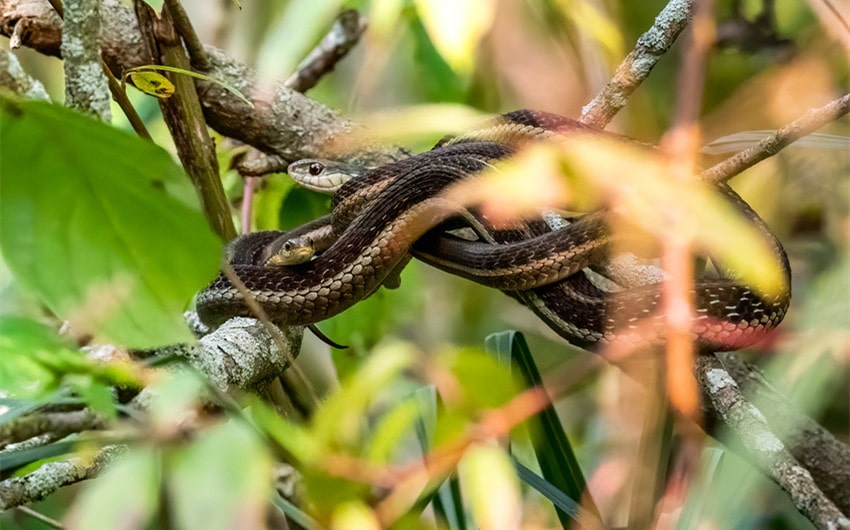
Secondary consumers play a critical role in the rainforest food web, acting as both predators and insectivores. These animals feed on primary consumers, such as herbivores and smaller insects, transferring the energy they have absorbed from plants up through the food web.
Without secondary consumers, the balance of the rainforest ecosystem would be disrupted, as herbivore populations could grow unchecked and cause overconsumption of plant life. Let’s explore some of the key predators and insectivores in the rainforest and how they contribute to this complex web of life.
1. Small Carnivores: Quick and Stealthy Hunters
The rainforest is home to numerous small carnivores, many of which are highly agile hunters. These secondary consumers include animals like ocelots and margays, which feed on smaller mammals, birds, and reptiles. These predators are highly adapted to their environment, using camouflage and agility to hunt in the dense undergrowth or trees.
By preying on smaller animals, these carnivores help keep the populations of herbivores in check, preventing overgrazing and ensuring that the ecosystem remains balanced. Without these predators, primary consumers could rapidly deplete the plant life they rely on, leading to food shortages for other species.
2. Reptiles: Snakes and Lizards in the Food Web
Reptiles are key secondary consumers in the rainforest, with snakes and lizards making up a significant portion of the predatory population. Snakes such as boa constrictors and pit vipers are ambush predators, waiting patiently for prey to come near before striking. They feed on a wide variety of smaller animals, including birds, frogs, and rodents.
Their presence helps regulate the populations of these species, ensuring that no single group dominates the ecosystem. Some lizards, such as monitor lizards, are opportunistic feeders, consuming anything from insects to small mammals, making them versatile members of the food web. These reptiles also serve as prey for larger predators, continuing the energy flow within the food web.
3. Birds of Prey: The Watchful Predators
Birds of prey, such as harpy eagles and hawks, are some of the most powerful secondary consumers in the rainforest. These raptors patrol the canopy and emergent layers, hunting for small mammals, reptiles, and other birds. The harpy eagle, for instance, is known for its ability to snatch up monkeys and sloths, using its powerful talons and sharp eyesight to locate prey from high in the trees.
By preying on a wide range of species, birds of prey help maintain the balance of the rainforest ecosystem, ensuring that no one species grows too dominant. They also play a role in controlling the populations of smaller carnivores, which helps maintain biodiversity in the rainforest.
4. Amphibians: Frogs as Insectivores
Amphibians, especially frogs, are important insectivores in the rainforest, feeding primarily on insects such as ants, flies, and beetles. While many amphibians also serve as prey for larger predators, they are active hunters themselves, keeping insect populations in check.
Species like the poison dart frog rely on insects for nourishment, and their role in the ecosystem helps prevent insect overpopulation, which could damage plant life and disrupt the food web. Frogs, by feeding on various insects, help maintain a balance that ensures the survival of both plants and animals in the rainforest.
5. Insectivores: Small but Significant Consumers
Insectivores, such as anteaters, armadillos, and certain birds like woodpeckers and insect-eating bats, play a vital role as secondary consumers. These animals primarily consume insects, many of which feed on plant matter or prey on other small creatures. For example, the giant anteater is known for consuming vast quantities of ants and termites, preventing their colonies from overpopulating and damaging the forest floor.
Similarly, bats feed on flying insects like moths and mosquitoes, which helps control insect populations that could otherwise become overwhelming. These insectivores are essential to the rainforest food web, as they prevent insect populations from becoming too large and impacting the health of the ecosystem.
6. Opportunistic Predators: Flexible Feeders
Some secondary consumers are opportunistic predators, meaning they feed on a variety of food sources depending on availability. Animals like coatis and civets are good examples of this flexibility. These creatures eat a mix of insects, fruits, small mammals, and even eggs, making them important in regulating multiple aspects of the food web.
Their adaptability allows them to thrive in different parts of the rainforest, from the canopy to the forest floor. By being opportunistic, these predators ensure that various animal populations remain in balance, as they consume whatever is available at any given time.
Why Secondary Consumers Are Vital to the Rainforest Ecosystem
Secondary consumers play a pivotal role in maintaining the delicate balance of the rainforest ecosystem. By preying on primary consumers like herbivores and insects, they prevent these populations from growing too large and causing overgrazing or damaging the plant life. This balance is crucial to maintaining biodiversity and ensuring that every layer of the rainforest, from the forest floor to the emergent canopy, thrives.
In addition to controlling populations, secondary consumers are a key link in the transfer of energy through the food web. They help pass energy from the plants (through primary consumers) to higher-level predators, such as jaguars and other apex predators. Without secondary consumers, the entire food web would collapse, as there would be no regulation of prey populations and no link between primary producers and the top of the food chain.
Moreover, secondary consumers also serve as prey for larger animals, ensuring that energy continues to flow through the food web. For example, small carnivores like ocelots may be preyed upon by jaguars, while birds of prey such as hawks can fall victim to larger raptors or reptiles. This interconnectedness ensures that no part of the food web exists in isolation, and each species contributes to the overall health of the ecosystem.
Tertiary Consumers: Top Predators of the Rainforest
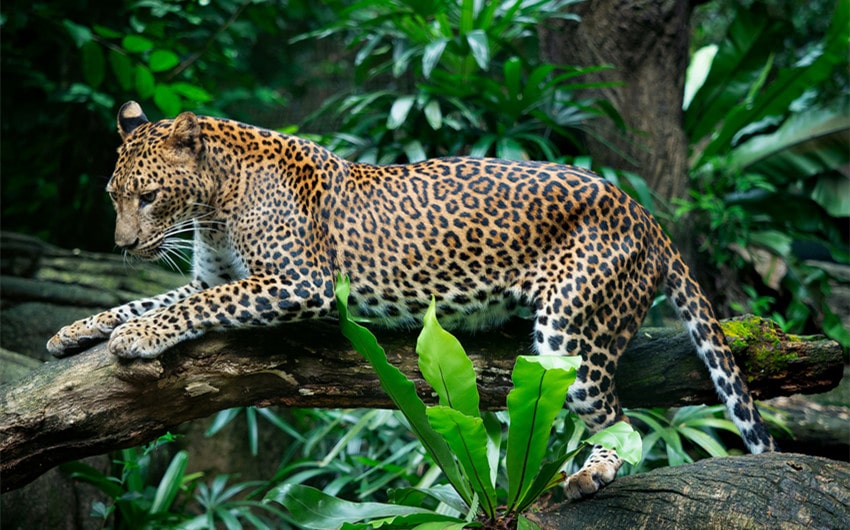
At the top of the rainforest food web, tertiary consumers reign as the most powerful predators, often referred to as apex predators. These animals have no natural enemies within their ecosystem and play a crucial role in regulating populations of secondary consumers and herbivores, keeping the balance in check.
By controlling the number of prey species, tertiary consumers ensure that the delicate balance of the rainforest ecosystem remains intact, preventing overpopulation and resource depletion. Let’s explore the various top predators of the rainforest, their roles, and why they are essential to the health and stability of the entire food web.
1. Jaguars: The Apex Predator of the Rainforest
The jaguar is one of the most iconic apex predators in the rainforest and holds a top position in the food chain. With its powerful build, strong jaws, and exceptional hunting skills, the jaguar preys on a variety of animals, including deer, capybaras, monkeys, and even caimans.
Jaguars are solitary hunters, often stalking their prey through the dense undergrowth before ambushing it with a swift and powerful attack. They are capable of taking down animals much larger than themselves, including anacondas and tapirs.
Jaguars play a vital role in maintaining the balance of the rainforest ecosystem by regulating the populations of herbivores and smaller predators. Without jaguars, the populations of these animals could grow unchecked, leading to overgrazing of plants and disruption of the food web. By keeping prey species in check, jaguars help ensure the long-term health of the rainforest and its biodiversity.
2. Harpy Eagles: Rulers of the Canopy
Among the most powerful birds of prey in the world, the harpy eagle is the apex predator of the rainforest canopy. With its large size, strong talons, and sharp eyesight, the harpy eagle can hunt and capture prey as large as monkeys, sloths, and opossums. Harpy eagles are known for their remarkable ability to navigate through the thick canopy of the rainforest in search of food, using their agility and speed to snatch their prey from the treetops.
By preying on medium-sized mammals and birds, harpy eagles help maintain a balance in the populations of canopy-dwelling species. Without this predator, species like monkeys and sloths could become overpopulated, leading to increased pressure on plant life in the canopy layer. Harpy eagles, as top predators, ensure that these herbivores don’t dominate the ecosystem, keeping the intricate balance of the rainforest intact.
3. Large Snakes: Silent Hunters of the Forest Floor
Anacondas and boa constrictors are among the largest and most formidable snakes in the rainforest, occupying the role of apex predators in their environment. These massive snakes, particularly the green anaconda, are capable of preying on a wide range of animals, including capybaras, deer, caimans, and even jaguars in rare instances. Anacondas and boas are constrictors, meaning they kill their prey by wrapping around it and squeezing until it suffocates.
These snakes play a crucial role in regulating populations of large herbivores and smaller predators. As they feed on a diverse array of species, they prevent any single group of animals from becoming too numerous, which could otherwise destabilize the ecosystem. Large snakes, by preying on a wide range of species, help ensure that both the forest floor and the water bodies they inhabit remain balanced and healthy.
4. Caimans and Crocodiles: Aquatic Apex Predators
In the rivers and waterways of the rainforest, caimans and crocodiles are top predators, preying on fish, birds, mammals, and reptiles. These powerful reptiles are incredibly well-adapted to their environment, using their strong jaws and sharp teeth to capture prey both in the water and along the riverbanks. Caimans, in particular, play an important role in controlling the populations of fish and smaller aquatic animals, ensuring that aquatic ecosystems don’t become overcrowded.
As apex predators, caimans and crocodiles help maintain the balance between prey species in the rainforest’s rivers and wetlands. By keeping fish and mammal populations in check, they contribute to the overall health of both terrestrial and aquatic food webs. Their presence ensures that no one species overpopulates the waterways, preserving the diversity of aquatic life.
5. Large Carnivorous Birds: Silent Stalkers of the Forest Floor
Birds like the crested caracara and black vulture are among the top predators and scavengers in the rainforest. While not as large as harpy eagles, these birds often scavenge on the remains of other animals and also hunt small mammals, reptiles, and birds. They play an essential role as tertiary consumers by helping to clean up the ecosystem, feeding on dead or decaying animals that would otherwise attract disease or pests.
These birds also control populations of small animals, acting as hunters when necessary and helping to prevent species from overpopulating the lower layers of the rainforest. Their ability to shift between scavenging and hunting allows them to adapt to changing food availability, making them flexible and crucial contributors to the rainforest food web.
Apex Predators and the Balance of the Rainforest Ecosystem
Apex predators, as tertiary consumers, occupy the highest level of the food chain in the rainforest, and their role is vital for maintaining the delicate balance of the ecosystem. By preying on secondary consumers, such as smaller carnivores, herbivores, and omnivores, they help regulate the populations of these animals and prevent overgrazing or overhunting of primary consumers.
This ensures that no single species grows too numerous, which could lead to the depletion of food resources and collapse of the food web.
Moreover, apex predators contribute to biodiversity by controlling dominant species that might otherwise suppress weaker ones. For example, by hunting large herbivores like capybaras and deer, jaguars prevent these animals from monopolizing food sources and allow smaller herbivores to thrive. Similarly, harpy eagles control the populations of tree-dwelling mammals, ensuring that canopy species remain diverse and balanced.
The Impact of Losing Tertiary Consumers
When tertiary consumers are removed from the food web, the entire ecosystem can suffer. Without apex predators, populations of herbivores and smaller carnivores may skyrocket, leading to overconsumption of vegetation and depletion of primary resources. This can trigger a trophic cascade, where the absence of top predators causes a chain reaction that disrupts every level of the food web, eventually leading to ecosystem collapse.
For instance, if jaguars were to disappear, prey species like capybaras and peccaries would likely overpopulate, causing excessive grazing and plant destruction. This would lead to a decline in plant life, affecting the herbivores that depend on these plants, as well as the secondary consumers that prey on herbivores. The loss of biodiversity would ripple through the ecosystem, weakening the rainforest’s ability to sustain itself.
Decomposers and Scavengers: Nature’s Recyclers
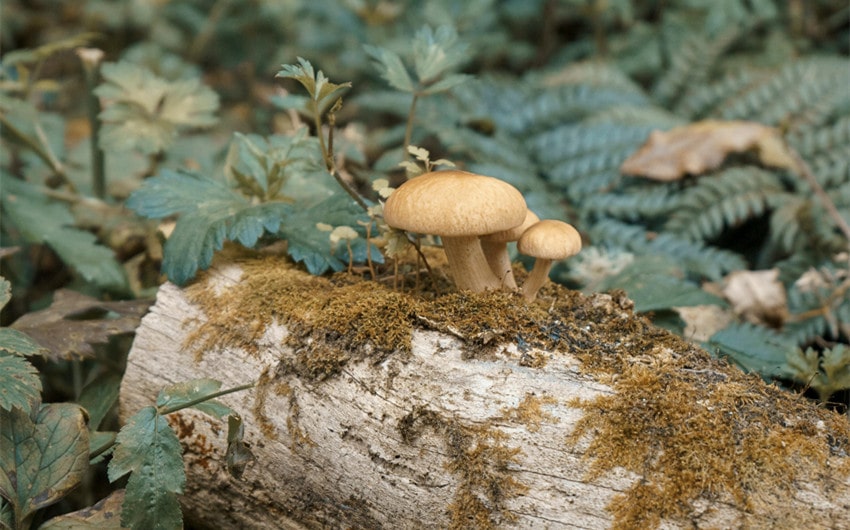
Decomposers and scavengers are often overlooked in discussions about food webs, but they play an absolutely vital role in maintaining the health and sustainability of ecosystems, especially in the rainforest. These organisms act as nature’s recyclers, breaking down dead plants, animals, and other organic matter, returning vital nutrients back into the soil for new growth.
Without decomposers and scavengers, ecosystems like the rainforest would be overwhelmed with dead material, and essential nutrients would be trapped, unavailable for new plant life to thrive. Let’s take a closer look at these unsung heroes of the rainforest food web and explore how they contribute to the ecosystem.
1. Decomposers: Breaking Down Organic Matter
Decomposers, such as fungi, bacteria, and microorganisms, are responsible for breaking down dead organic material, including leaves, wood, and the remains of animals. These organisms feed on the organic matter, breaking it down into simpler substances like carbon, nitrogen, and other nutrients that enrich the soil and are absorbed by plants.
In the rainforest, where plant and animal life is abundant, decomposers work constantly to process the immense volume of organic material that falls to the forest floor. When a tree sheds its leaves or an animal dies, decomposers immediately begin to break down the matter.
Fungi, such as mushrooms and molds, are particularly active in rainforests because of the moist, warm environment that allows them to thrive. These fungi secrete enzymes that break down complex organic matter into simpler compounds, which are then absorbed by the fungi and also released into the soil.
Bacteria also play a major role in decomposition. They are responsible for breaking down animal remains and other organic material at a microscopic level. These bacteria consume dead matter and release nutrients like nitrogen and phosphorus back into the environment, enriching the soil for new plant growth. Without bacteria, nutrient cycling in the rainforest would be severely hindered, leading to reduced fertility of the soil and a breakdown in the food web.
2. Scavengers: Cleaning Up the Ecosystem
Scavengers are another important group in the rainforest’s recycling system. These animals feed on the remains of dead organisms, helping to clear away carcasses and return nutrients to the ecosystem. Scavengers can be both large and small, ranging from vultures to ants. While they might not be as glamorous as predators or primary consumers, scavengers are essential for keeping the rainforest clean and ensuring that dead material doesn’t accumulate.
Vultures are among the most well-known scavengers in the rainforest. These large birds have keen eyesight and an acute sense of smell that helps them locate animal carcasses. They consume the remains, including bones and tissues that might otherwise take longer to decompose naturally. By feeding on dead animals, vultures help prevent the spread of disease and speed up the decomposition process, returning nutrients to the environment more quickly.
Ants are another incredibly important scavenger in the rainforest. Species like leafcutter ants are known for their ability to break down plant material, but many ant species also consume animal remains. They can strip a carcass clean within hours, leaving behind only bones. Ants not only remove dead material but also transport it back to their nests, where it can provide nutrients for their colonies.
3. Earthworms: Turning Organic Matter into Nutrient-Rich Soil
While often small and hidden from view, earthworms are among the most efficient decomposers in the rainforest. They consume organic matter, including dead leaves and plant material, digesting it and turning it into nutrient-rich castings that improve soil structure and fertility. As earthworms burrow through the soil, they aerate it, allowing water and nutrients to penetrate deeper, supporting root growth and plant health.
Earthworms are especially important in rainforests because of the rapid rate of decomposition that occurs in such a moist, warm environment. By breaking down organic material and mixing it into the soil, earthworms help maintain the fertility of the rainforest floor, ensuring that plants can continue to thrive and that the food web remains stable.
4. Termites and Beetles: Silent Decomposers
Termites and beetles are often some of the most active decomposers in the rainforest, especially when it comes to processing dead wood and plant material. Termites, in particular, are known for their ability to break down cellulose, the main component of plant cell walls, which is difficult for many other organisms to digest. They create colonies in dead trees and fallen logs, feeding on the wood and breaking it down into smaller particles that can eventually be absorbed into the soil.
Beetles, including dung beetles, play a vital role in the decomposition of both plant and animal matter. Dung beetles, for example, feed on the waste of other animals, breaking it down and burying it underground. This not only helps decompose the material but also enriches the soil, making it more fertile for plant life.
By cleaning up waste and decomposing dead plants and animals, these insects contribute significantly to the health and balance of the rainforest ecosystem.
Nutrient Cycling: How Decomposers Sustain the Rainforest
Decomposers and scavengers are essential to the rainforest because they drive the process of nutrient cycling. When plants and animals die, their bodies are full of nutrients that other living organisms can use. Without decomposers and scavengers, these nutrients would remain locked in dead material and eventually be lost from the ecosystem. By breaking down organic matter, decomposers release vital nutrients back into the soil, where they are absorbed by plants.
This cycle is essential for sustaining the high level of biodiversity in the rainforest. Plants depend on nutrient-rich soil to grow, and animals depend on plants for food. If decomposers and scavengers were not there to return nutrients to the soil, plant growth would slow down, which would in turn reduce the food available for herbivores and disrupt the entire food web.
In essence, decomposers and scavengers keep the rainforest food web functioning by ensuring that energy and nutrients are continuously recycled and reused.
The Role of Decomposers in Carbon and Nitrogen Cycling
Beyond simply breaking down organic matter, decomposers also play a crucial role in the global carbon and nitrogen cycles. As they break down dead plants and animals, decomposers release carbon dioxide back into the atmosphere through respiration, helping to regulate the levels of carbon in the air. This process is essential for maintaining the balance of greenhouse gases, which influence the Earth’s climate.
Decomposers also play a significant role in the nitrogen cycle. By breaking down organic material, bacteria and fungi release nitrogen into the soil, where it is transformed into forms that plants can absorb and use for growth. This nitrogen is critical for building proteins and other essential molecules in plants, animals, and microorganisms, making it a key nutrient for life in the rainforest.
Why Decomposers and Scavengers Are Crucial for the Rainforest
Decomposers and scavengers are the unsung heroes of the rainforest food web. They may not be as visible or celebrated as predators and herbivores, but without them, the rainforest ecosystem would collapse. By breaking down dead plants and animals and returning nutrients to the soil, they ensure that new life can thrive and that the food web continues to function.
Furthermore, decomposers and scavengers help maintain the health of the rainforest by preventing the buildup of dead material and waste. This reduces the spread of disease and keeps the forest clean, ensuring that plants and animals have the space and resources they need to grow and reproduce. In essence, they are the foundation that supports the entire ecosystem, ensuring that life can continue in this complex and dynamic environment.
The Importance of Balance in the Rainforest Food Web
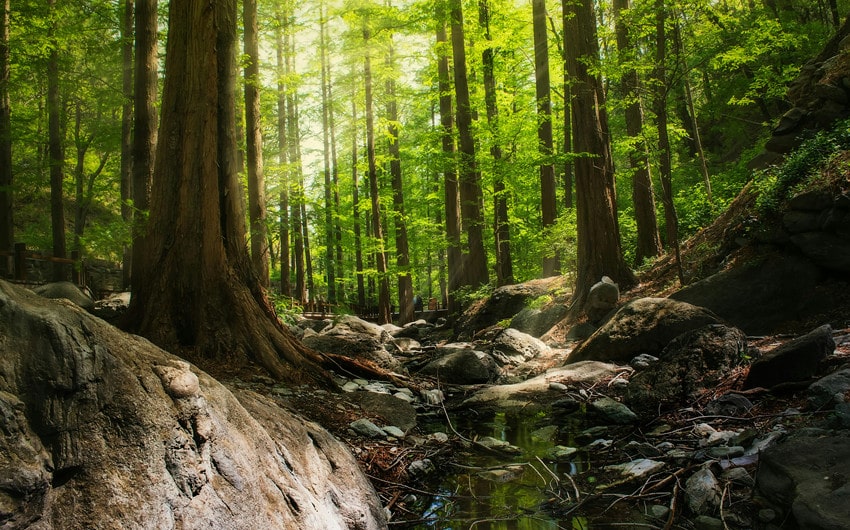
The rainforest food web is a complex and interconnected system where each species, from the smallest insects to the largest predators, plays a critical role in maintaining balance. This balance is essential to the overall health and sustainability of the rainforest ecosystem.
Each layer of the food web relies on the others to function properly, and any disruption can lead to significant consequences for the ecosystem as a whole. Understanding why balance in the rainforest food web is important helps highlight the delicate nature of this system and the need for conservation efforts to protect it.
1. Energy Flow and Nutrient Cycling
At the heart of the rainforest food web is the flow of energy, which begins with the primary producers—plants and trees—absorbing energy from the sun through photosynthesis. This energy is then transferred to herbivores (primary consumers), who feed on plants, and later to carnivores (secondary and tertiary consumers) that prey on these herbivores.
Decomposers and scavengers complete the cycle by breaking down dead organisms, returning nutrients to the soil, which in turn supports plant growth. Each level of the food web is interdependent, and any disruption at one level can affect all the others.
If herbivores were to overpopulate due to the absence of predators, they could deplete the vegetation, leading to food shortages for themselves and other animals. Similarly, if decomposers were not present, dead plant and animal material would accumulate, trapping nutrients and slowing plant growth. Maintaining this balance ensures that energy flows smoothly through the ecosystem and that nutrients are continuously recycled to sustain life.
2. Species Interdependence
In the rainforest food web, species are highly interdependent. For example, predators like jaguars and harpy eagles keep herbivore populations in check, preventing overgrazing that could destroy vegetation. In turn, herbivores depend on plants for sustenance, and plants rely on herbivores and other animals for seed dispersal and pollination.
Disruptions to this balance, such as the removal of a predator, can have cascading effects throughout the food web. For instance, if jaguars were removed, prey species like deer and capybaras could overpopulate, leading to overgrazing.
This would not only reduce plant availability for other herbivores but also impact smaller predators that rely on these species for food. In this way, each species plays a role in maintaining the balance of the ecosystem, and their interactions are crucial for the survival of the rainforest.
3. Biodiversity and Ecosystem Stability
The diversity of species in the rainforest is one of the key factors that contributes to the stability of the food web. High biodiversity ensures that there are multiple species filling similar ecological roles, which helps to buffer the ecosystem against changes or disruptions. For example, if one species of herbivore were to decline due to disease or environmental change, other herbivores could step in to fill its role, ensuring that the food web remains intact.
Biodiversity also promotes ecosystem resilience. When the food web is balanced and diverse, the rainforest is better equipped to recover from disturbances like storms, floods, or human interference. However, if biodiversity is reduced, the entire ecosystem becomes more vulnerable to collapse, as there are fewer species available to fulfill essential roles within the food web.
Threats to the Rainforest Food Web
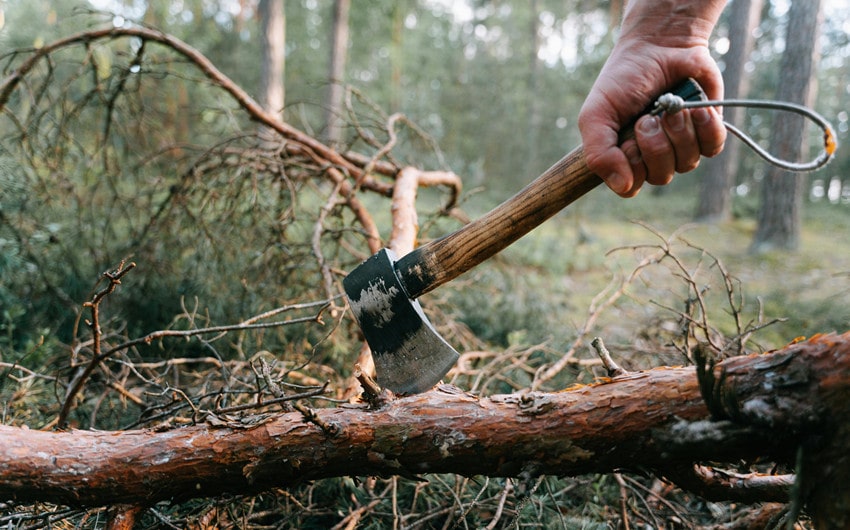
Despite its resilience, the rainforest food web faces numerous threats, many of which are driven by human activity. These threats can destabilize the intricate balance of the ecosystem, leading to loss of biodiversity, habitat destruction, and even collapse of the food web. Let’s explore some of the key threats to the rainforest food web and the potential consequences they pose.
1. Deforestation: The Destruction of Habitat
One of the most significant threats to the rainforest food web is deforestation. Large areas of rainforest are cleared each year for agriculture, logging, and infrastructure development. When trees and plants are removed, it disrupts the entire food web by eliminating the primary producers that support herbivores and higher-level consumers. Deforestation also destroys habitats, forcing animals to migrate or face extinction.
For example, jaguars, harpy eagles, and other top predators rely on large, continuous territories to hunt and survive. When these territories are fragmented by deforestation, it limits their access to prey and breeding grounds. This, in turn, affects the populations of the species they hunt, leading to imbalances in the food web. The loss of trees also reduces the rainforest’s capacity to store carbon and regulate the global climate, creating further environmental challenges.
2. Climate Change: Shifting Ecosystem Dynamics
Climate change poses a growing threat to the rainforest food web. Rising temperatures, changing precipitation patterns, and increased frequency of extreme weather events are altering the environment in which species live. For example, droughts can lead to water shortages, reducing the availability of food and water for herbivores, which in turn affects the predators that rely on them.
Additionally, climate change can cause shifts in species distributions. Some species may migrate to higher elevations or different regions in search of suitable conditions, while others may struggle to adapt to the new climate. These changes can disrupt the delicate balance of the food web, as species interactions are altered and certain species become more vulnerable to extinction.
3. Invasive Species: Disrupting Native Ecosystems
Invasive species introduced to the rainforest by human activity can pose a major threat to the native food web. These species often have no natural predators in their new environment, allowing them to outcompete or prey on native species, disrupting the balance of the ecosystem. For example, non-native plants can outgrow native species, reducing the availability of food for herbivores that depend on indigenous plants.
Invasive animals, such as certain types of insects or fish, can also cause harm by preying on or competing with native species. This can lead to a reduction in biodiversity, as native species are pushed out of their ecological niches or driven to extinction. The introduction of invasive species can cause a ripple effect throughout the food web, as changes in one species’ population affect the entire ecosystem.
4. Illegal Wildlife Trade: Removing Key Species
The illegal wildlife trade is another serious threat to the rainforest food web. Many species, including jaguars, parrots, and certain reptiles, are hunted for their skins, feathers, or as exotic pets. The removal of these animals from the wild can have devastating effects on the ecosystem.
For example, the loss of a top predator like the jaguar can lead to an overpopulation of herbivores, which in turn causes overgrazing and depletion of plant resources. Similarly, the removal of parrots or monkeys, which play a role in seed dispersal, can reduce plant diversity and affect the regeneration of the forest. By disrupting the natural balance of the food web, the illegal wildlife trade can have long-lasting consequences for the entire ecosystem.
5. Pollution: Contaminating the Food Web
Pollution, particularly from agricultural runoff, mining, and industrial activities, is another significant threat to the rainforest food web. Chemicals such as pesticides and heavy metals can enter the water and soil, contaminating the plants that herbivores feed on. These toxins can accumulate as they move up the food chain, eventually reaching top predators, leading to illness or death.
For example, mercury used in illegal gold mining can contaminate water sources and accumulate in fish, which are then eaten by larger animals, including humans. This process, known as bioaccumulation, can lead to poisoning at higher levels of the food web, affecting both wildlife and indigenous communities that rely on the rainforest for their livelihoods.
The Urgent Need for Conservation
To protect the balance of the rainforest food web, it is crucial to implement conservation measures that address these threats. This includes reducing deforestation, mitigating climate change, controlling invasive species, and cracking down on illegal wildlife trade. Protecting the integrity of the rainforest is not only vital for the survival of its rich biodiversity but also for the many ecosystem services it provides, from carbon sequestration to water purification.

